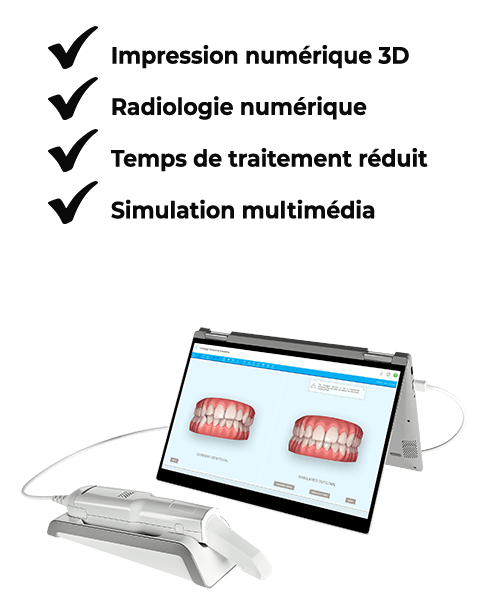
It is essential to protect the health of your teeth for as long as possible. Consulting a specialist orthodontist can help you make sure you receive the best possible treatment and care. If you want to get the best treatment for you or your child but aren’t sure what orthodontic treatment really involves, here is a guide to the orthodontic journey:
Be sure to choose a specialist orthodontist for a first assessment. This assessment is beneficial to find out if you need early dental treatment. In this case, your dentist will explain to you what is needed and the key steps of the treatment plan he will suggest.
This thorough initial diagnosis includes an examination of the face, teeth, and bite, to do this, your dentist might take a panoramic x-ray of your teeth.
There are several treatment options that may be right for you. Your orthodontist will make recommendations based on the most effective option. He will also give you advice on the expected cost and duration of the treatment.
Your orthodontist will be able to answer any questions you may have regarding your orthodontic treatment.
Your orthodontist can quote the length of treatment to help you prepare for the years to come.
Depending on the type of treatment decided, there may be a short waiting period while your personalized braces are created. During the first appointment, your orthodontist will make a mold to help create this device.
It may take time to adjust the rings to ensure that the rings are securely attached to the teeth. You will feel some discomfort for a few days after your braces have been placed, ask your orthodontist for advice to help relieve the pain and discomfort.
Your orthodontist will show you how to brush your teeth and floss properly around your braces.
You should also avoid eating hard foods and stick to soft foods for a few days, such as soups, yogurt, and bananas. If you practice contact sport, you should discuss with your orthodontist about a suitable mouthguard to wear.
Your orthodontist will arrange regular visits with you, probably every 6 to 8 weeks, to adjust your orthodontic appliance. This may involve putting on rubber bands that allow treatment to progress quickly.
Once your appliance is removed, your orthodontist will give you some instructions to make sure your teeth are held in place.
114, Jawhara 2, Targa, Marrakech 40000, Maroc
+212 5 24 49 81 67
info@cliniquedentairetarga.com

These devices are made of high quality stainless steel. They are the most common type of orthodontic appliance and are now lighter and more comfortable to wear. They are fixed to the teeth using orthodontic cement and are linked together. Elastic clips are used later to hold the arch in place as the teeth straighten and can be silver or stained.
Lingual braces attach to the back of the teeth rather than the front. This makes them virtually invisible but slightly more uncomfortable than traditional braces because the tongue frequently comes in contact with them. These appliances can be metal or transparent and generally resemble traditional orthodontic appliances. They have a special clip instead of rubber bands to reduce the pressure applied to the teeth.
These devices work the same as metal devices, except that they are transparent, which makes them less noticeable. They are used primarily on the upper teeth rather than the lower teeth. These braces are perfect for adults or teens who experience aesthetic discomfort regarding metal braces. However, ceramic braces require a high level of oral hygiene because they are larger and more fragile than metal braces.

These are transparent aligners for straightening teeth. Without any trace of metal, it gently moves the teeth. They’re tailor-made for you, and each one will move your teeth little by little. Since there are no wires or metal brackets, clear aligners are very discreet and in high demand by patients especially as they can remove them and enjoy all the foods that would be difficult to eat with a fixed appliance. You just need to wear them for at least 20 hours a day.
The cost of orthodontic appliances varies depending on your personal situation and the type of treatment you wish to have.
You might consider wearing braces if you have:
Orthodontic issues can lead to more serious health issues, so if you want to maintain your oral health, you should visit your orthodontist as soon as possible to discuss your options and get a treatment plan.
Depending on your orthodontic problem, there are alternative treatments. For example, if you are looking to correct a small gap between your teeth, you may want to consider dental bonding instead of braces.
It is recommended that you take your child to the orthodontist before the age of 7. Thus, common childhood dental problems can be detected and resolved such as crowding and tooth spacing issues.
Teeth move at different rates depending on the case of each person. Minor adjustment cases may take as little as three to six months while more complex cases may take over a year to be corrected.
Orthodontic treatment goes beyond just correcting your bite. Indeed, a new smile can change your life. It is therefore important for each patient to receive personalized, comprehensive and in-depth care. Orthodontic technologies today represent innovative tools that can make a real difference in terms of treatment time and results obtained.
Indeed, the development of new technologies and methods has offered more aesthetic options, better analysis and a better patient experience.
We will send you a confirmation within 24 hours. Emergency? Call +212 5 24 49 81 67
We will send you a confirmation within 24 hours. Emergency? Call +212 5 24 49 81 67

